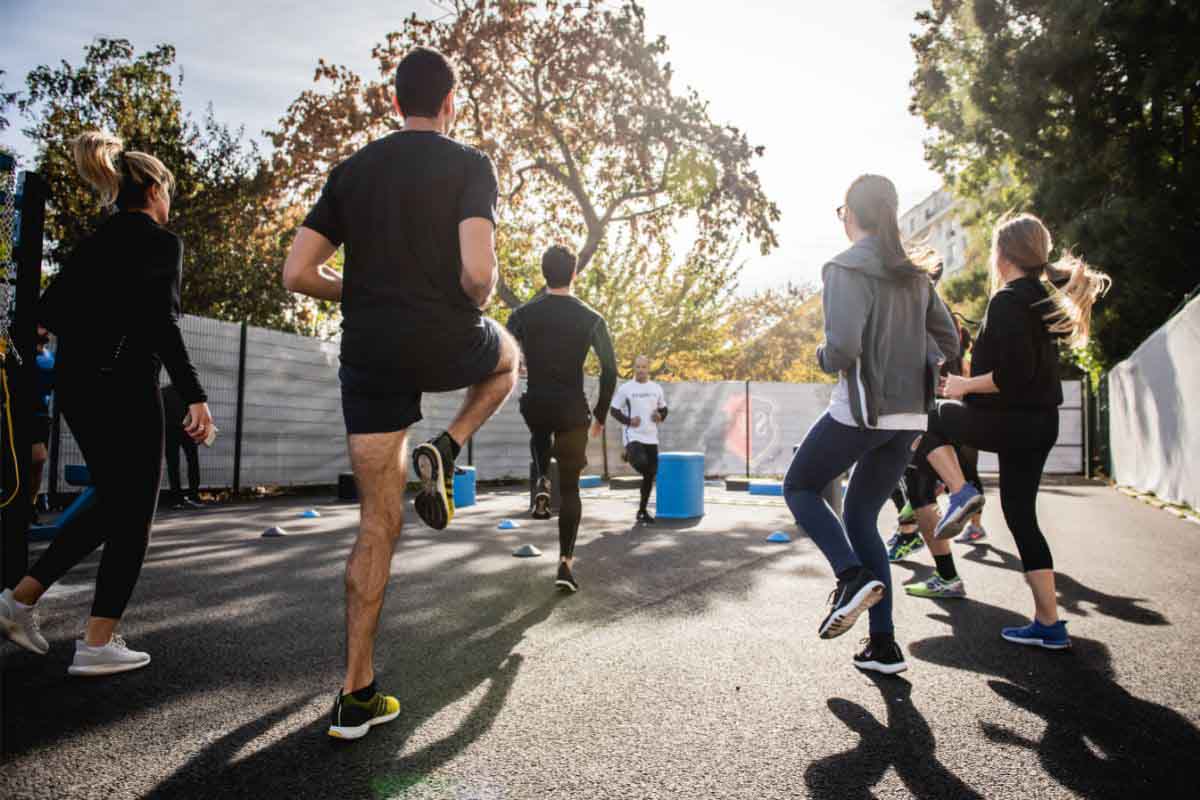Understanding the Role of Muscle Soreness and Recovery
When considering the question “is it bad to run after leg day,” it’s essential to understand the role of muscle soreness and recovery in the context of exercise. Delayed onset muscle soreness (DOMS) is a common experience following strenuous workouts, characterized by muscle pain and stiffness that peaks approximately 24 to 72 hours post-exercise. This soreness is a result of micro-damage to muscle fibers and the subsequent inflammatory response, which plays a crucial role in muscle repair and growth.
Running after leg day can impact this recovery process, as subsequent exercise sessions may exacerbate muscle damage and prolong the recovery period. This increased muscle damage can lead to heightened fatigue, reduced performance, and potential injury if not managed properly. Proper recovery, which includes rest, nutrition, and active recovery techniques, is vital to ensuring that the body can effectively repair and strengthen muscles.
The Connection Between Running and Leg Day Workouts
When evaluating the question “is it bad to run after leg day,” it’s important to consider the relationship between running and leg day workouts. Engaging in strenuous running sessions immediately following leg day exercises can exacerbate muscle damage and prolong recovery. This is due to the compounding effects of micro-trauma inflicted on muscle fibers during both running and leg day activities.
Increased fatigue and reduced performance are common consequences of running after leg day, as the body struggles to cope with the accumulated stress of consecutive exercise sessions. Moreover, the risk of injury may rise, as the already taxed muscles and connective tissues may be less capable of withstanding the demands placed upon them. Proper recovery, including rest, stretching, and gentle massage, can help mitigate these risks and support the body’s natural healing processes.
Planning is crucial when incorporating both running and leg day workouts into a fitness regimen. By strategically scheduling these activities to allow for adequate recovery, exercisers can minimize the potential for overtraining and injury while maximizing the benefits of each workout. For instance, alternating between upper and lower body exercises or incorporating cross-training activities can help ensure that individual muscle groups have sufficient time to recover between sessions.
Weighing the Pros and Cons: Is Running After Leg Day Beneficial?
When examining the question “is it bad to run after leg day,” it’s essential to consider both the potential advantages and disadvantages of this approach. Running after leg day can have both positive and negative implications, depending on various factors such as individual fitness goals, recovery capacity, and exercise intensity.
On the positive side, running after leg day can contribute to increased cardiovascular fitness, as the heart and lungs work harder to supply oxygen and nutrients to the working muscles. Additionally, incorporating active recovery sessions, such as light jogging or walking, can help promote blood flow and facilitate the removal of metabolic waste products, potentially accelerating the recovery process.
However, there are also potential drawbacks to consider. Running after leg day can lead to decreased leg strength and power, as the already taxed lower body muscles may struggle to perform optimally during subsequent exercise sessions. Moreover, engaging in strenuous running workouts immediately following leg day activities can increase the risk of injury, as the body may not have sufficient time to recover and repair damaged muscle fibers and connective tissues.
To mitigate these risks, it’s crucial to strike a balance between running and leg day workouts, taking into account individual fitness goals and recovery needs. By carefully structuring workout schedules and incorporating strategies such as alternating muscle groups, prioritizing recovery, and adjusting workout frequency, exercisers can minimize the potential for overtraining and injury while maximizing the benefits of each workout session.
How to Optimize Your Workout Schedule: Strategies for Success
To maximize the benefits of running and leg day workouts while minimizing risks, it’s crucial to develop a well-structured workout schedule. By employing strategies such as alternating muscle groups, prioritizing recovery, and incorporating cross-training, exercisers can optimize their routines to achieve their fitness goals without compromising performance or increasing the risk of injury.
One effective approach is to alternate between upper and lower body exercises, dedicating separate days to running and leg workouts. This method allows each muscle group to recover fully before the next intense workout, reducing the potential for overtraining and fatigue. Additionally, alternating muscle groups enables exercisers to maintain a consistent workout frequency without negatively impacting performance or recovery.
Prioritizing recovery is another essential aspect of optimizing a workout schedule. Adequate rest, sleep, and nutrition play critical roles in facilitating muscle repair and growth, allowing exercisers to perform at their best during subsequent workout sessions. Incorporating active recovery techniques, such as light jogging, walking, or stretching, can further support the recovery process by promoting blood flow and facilitating the removal of metabolic waste products.
Lastly, cross-training can help exercisers maintain a balanced fitness regimen while minimizing the potential for overuse injuries. By incorporating various activities, such as swimming, cycling, or yoga, exercisers can target different muscle groups and energy systems, promoting overall fitness and well-being.
Assessing Your Fitness Goals: Tailoring Your Workout Plan
When designing a workout schedule, it’s essential to consider personal fitness goals, as different objectives may necessitate different approaches to running and leg day workouts. By tailoring your plan to align with your specific goals, you can maximize the benefits of each workout session and make more informed decisions about running after leg day activities.
For instance, if your primary goal is to improve endurance, incorporating regular running sessions into your routine can be highly beneficial. Running not only targets the cardiovascular system but also engages the lower body muscles, providing a comprehensive workout that can enhance overall fitness and performance. In this case, running after leg day workouts might be more compatible, as the increased cardiovascular demand can contribute to improved endurance without compromising leg strength and power.
Conversely, if your focus is on building lower body strength, you may want to prioritize leg day workouts and limit running sessions, particularly on consecutive days. This approach allows for optimal recovery and growth of the targeted muscle groups, ensuring that you can perform at your best during strength training sessions. By carefully planning your workout schedule and considering your fitness goals, you can create a balanced routine that supports your objectives and promotes long-term progress.
Navigating Common Challenges: Solutions for Busy Lifestyles
Limited time for exercise can make it difficult to balance running and leg day workouts. However, by incorporating creative solutions such as high-intensity interval training (HIIT) sessions or adjusting workout frequency, you can maintain a balanced fitness regimen without sacrificing performance or recovery.
HIIT sessions offer a time-efficient workout alternative, allowing exercisers to target multiple muscle groups and energy systems in a single session. By incorporating short bursts of high-intensity exercise followed by brief recovery periods, HIIT workouts can effectively improve cardiovascular fitness, strength, and power while minimizing the overall time commitment. Moreover, the intense nature of HIIT sessions can contribute to active recovery, promoting blood flow and facilitating the removal of metabolic waste products.
Adjusting workout frequency is another practical solution for those with limited time for exercise. By consolidating running and leg day workouts into fewer, more intense sessions, exercisers can maintain a consistent workout schedule without compromising recovery or performance. For example, instead of dedicating separate days to running and leg workouts, you might consider combining both activities into a single, full-body session, allowing for adequate recovery between workout days.
The Role of Nutrition and Hydration: Fueling Your Body for Success
Proper nutrition and hydration play crucial roles in supporting exercise recovery and performance. By optimizing pre- and post-workout meals and hydration strategies, you can enhance your body’s ability to repair and strengthen muscles, minimizing the potential negative impact of running after leg day activities.
Pre-workout nutrition should focus on providing a balanced mix of carbohydrates, proteins, and healthy fats to fuel your body for exercise. Consuming a meal or snack containing these macronutrients approximately 2 to 3 hours before your workout can help ensure that your body has a steady supply of energy and amino acids throughout your session. Additionally, proper hydration before exercise is essential for maintaining optimal performance and reducing the risk of dehydration during your workout.
Post-workout nutrition should prioritize protein intake, as this macronutrient is essential for muscle repair and growth. Consuming a protein-rich meal or snack within 30 to 60 minutes after exercise can help kickstart the recovery process and support the development of stronger, more resilient muscles. Furthermore, rehydrating after exercise is vital for replenishing fluids lost through sweat and promoting overall recovery.
Monitoring Progress and Adjusting Your Plan: Staying on Track
Monitoring progress and making adjustments to your workout plan is crucial for long-term success in any fitness regimen, including evaluating the impact of running after leg day activities. By tracking performance indicators and making data-driven decisions about your running and leg day schedules, you can optimize your workout plan to better align with your fitness goals and personal preferences.
To effectively monitor progress, consider tracking metrics such as workout frequency, duration, intensity, and recovery time. Additionally, assessing performance indicators like strength, power, endurance, and body composition can provide valuable insights into the effectiveness of your current workout schedule. Regularly reviewing this data can help you identify trends, patterns, and areas for improvement, allowing you to make informed adjustments to your plan as needed.
When deciding whether to run after leg day or adjust your workout schedule, consider the following factors: your fitness goals, recovery needs, and personal preferences. For example, if your primary goal is to improve endurance, incorporating regular running sessions into your routine may be beneficial. However, if you find that running after leg day workouts negatively impacts your performance or recovery, you might consider adjusting your schedule to better accommodate your needs. This could involve separating running and leg day workouts by at least 24 hours, incorporating active recovery sessions, or alternating between running and strength training days.









